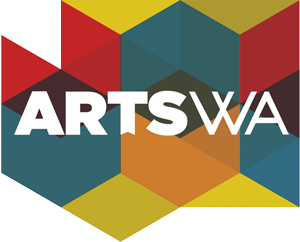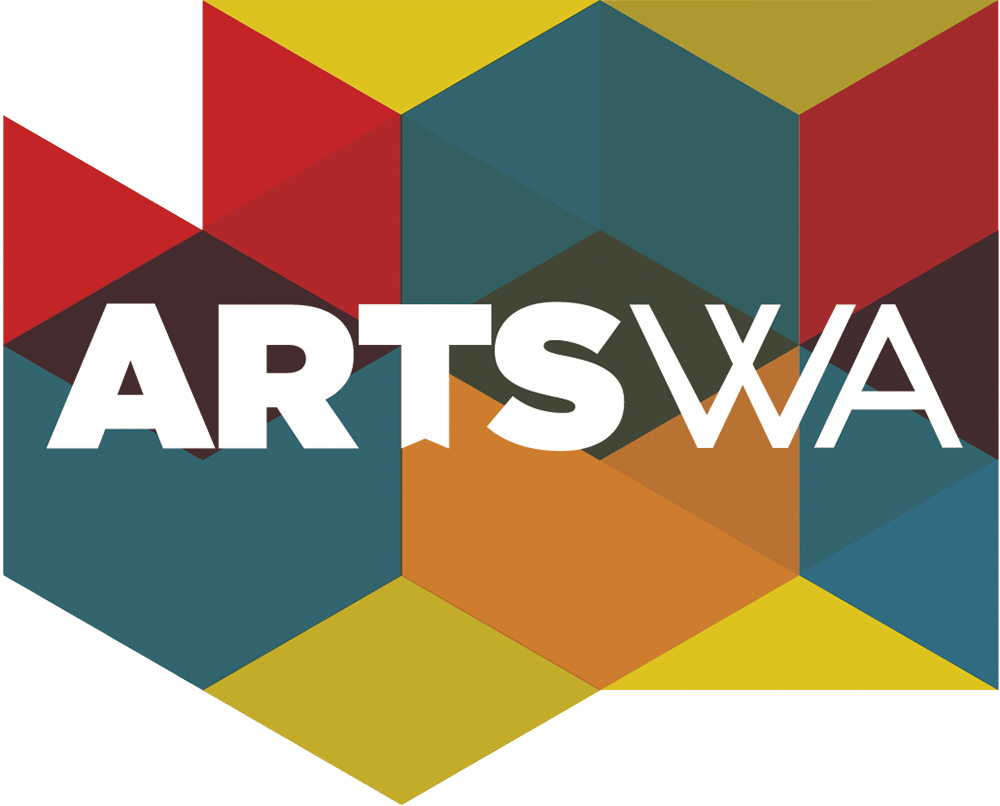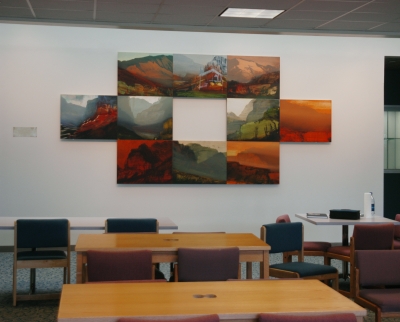Sun, Moon, Horizon, 2004
James Lavadour
(American | Confederated Tribes of the Umatilla, born 1951)
Location: Bellevue College, Bellevue
ABOUT THE ARTWORK
James Lavadour's Sun, Moon, Horizon takes its form from the weaving designs of the Walla Walla, Cayuse, and Umatilla tribes that reside today on the Umatilla Reservation, where the artist grew up and makes his home. The imagery depicts the mountains and plains of the Columbia River Plateau.
This artwork was acquired for the State Art Collection in partnership with Bellevue Community College.
ABOUT THE ARTIST
James Lavadour (Walla Walla) creates expressive paintings and prints that are deeply influenced by the natural environment and geology of Northeast Oregon. He grew up in the foothills of the Blue Mountains on the Umatilla Reservation near Pendleton, Northeast Oregon, and is a member of the Confederated Tribes of the Umatilla. In his own words, "Everything that is in the land is in me... My art education came from the land. I learned through endless walking, looking, hearing, and feeling the natural world around me." Lavadour has been making artwork for more than four decades.
In 1992, Lavadour co-founded Crow's Shadow Institute of the Arts, a non-profit organization and printmaking studio on the Umatilla Reservation, near Pendleton, Oregon. The institute provides artist residencies and Indigenous arts workshops. Crow’s Shadow is the only professional fine art print publisher located on a Native American reservation in the United States.
ARTWORK DETAILS
| Material Category | Painting - paint on rigid surface / mixed media |
| Medium | Oil paint on Baltic birch plywood |
| Dimensions | 6 ft x 12 ft 6 in |
| ID Number | WSAC2004.026.000 |
| Acquisition Method | Site responsive commission |
| Artist Location | Oregon, United States |
Location Information
| Agency | Bellevue College |
| Artwork Location | Bellevue College Student lounge L100 |
| WA County | King |
| Placement | Interior |
| Site Type | College |
| Address | 3000 Landerholm Circle SE Bellevue, WA 98007 |
| Geo. Coordinates | 47.585639, -122.148828 |
| Before Visiting | Some artworks may be located in areas not accessible to the general public (especially in K-12 public schools). Consider contacting the site prior to a visit to ensure access. |
| Map |
Related





_edited_TopLeft.jpg)
_edited_TopCenter.jpg)
_edited_TopRight.jpg)
_edited_MidLeft.jpg)
_edited_MidLeft.jpg)
_edited_MidRight.jpg)
_edited_MidRight.jpg)
_edited_LowerLeft.jpg)
_edited_LowerCenter.jpg)
_edited_LowerRight.jpg)

_Edited.jpg)